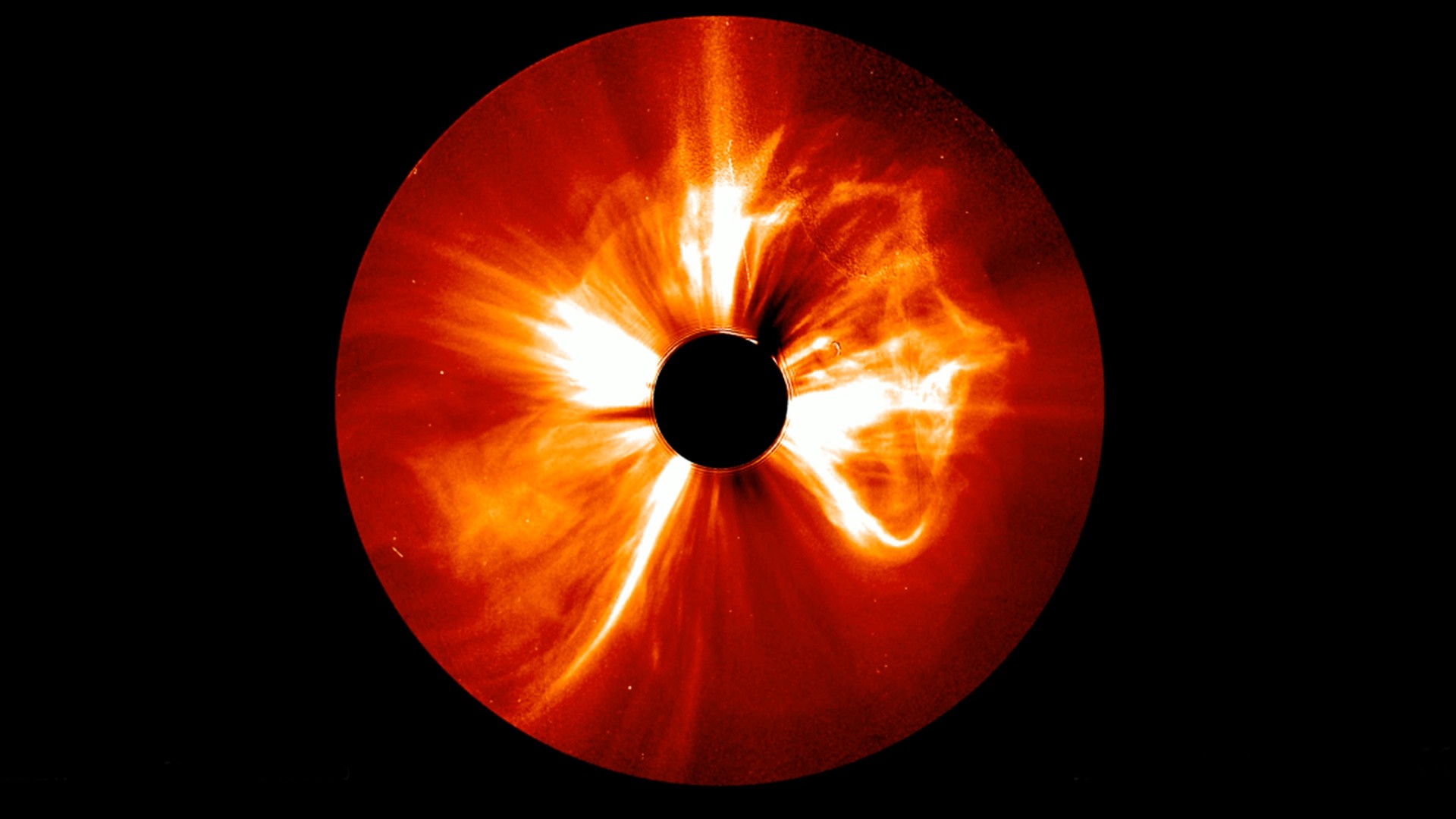Sun blasts out most powerful flare of current solar cycle, sends massive coronal mass ejection into space (video)
The flare was even bigger than a previous one that triggered May's global aurora storm.
On Tuesday (July 23), Europe's Solar Orbiter (SolO) spacecraft witnessed an extremely powerful X14 class solar flare erupt from the far side of the sun.
Although it was not the most powerful flare ever recorded, which was estimated at roughly a X45 back in 2003, solar flares of this magnitude can result in longer-lived radiation storms and even world-wide blackouts if they are directed at Earth. The X-class are the leaders on the classification scale, and blast out energy 10 times more powerful than M class flares, which is second on the list.
"From the estimated GOES class, it was the largest flare so far," Samuel Krucker, the principal investigator for the Spectrometer and Telescope for Imaging X-rays (STIX) on SolO, shared told SpaceWeather.com. "Other large flares we've detected are from May 20, 2024 (X12) and July 17, 2023 (X10). All of these have come from the back side of the sun."

As far as on the sun's Earthside, the biggest flare that was recorded so far for this current cycle occurred on May 14, 2024, an X8.9, associated with the beastly sunspot that created the historic geomagnetic storm that led to worldwide auroras.
Accompanying the flare was an extremely large coronal mass ejection (CME), detected by NASA's Solar and Heliospheric Observatory (SOHO). CMEs are bursts of plasma and magnetic field that erupt outward from the sun's atmosphere. The magnetically charged plasma blast that accompanied the X-class flare on July 23 was not sent in our direction, but if it was, it could have been quite the solar storm.
Had this CME taken a path that would bring impacts to Earth, it could have brought quite the impacts to our planet. The viewing of the auroras could have been quite impressive, but on the concerning side, with such a dynamic blast of energetic particles whipped up and hurled our way, it could have threatened us with major technological problems or electrical blackouts similar to the event in 1989 that severely impacted the power grid in Quebec, according to SpaceWeather.com.
Just remember: the sun is always rotating, so this region will remain one to watch as it comes back into view within the next week and a half.
Get the Space.com Newsletter
Breaking space news, the latest updates on rocket launches, skywatching events and more!
Join our Space Forums to keep talking space on the latest missions, night sky and more! And if you have a news tip, correction or comment, let us know at: community@space.com.

Meredith is a regional Murrow award-winning Certified Broadcast Meteorologist and science/space correspondent. She most recently was a Freelance Meteorologist for NY 1 in New York City & the 19 First Alert Weather Team in Cleveland. A self-described "Rocket Girl," Meredith's personal and professional work has drawn recognition over the last decade, including the inaugural Valparaiso University Alumni Association First Decade Achievement Award, two special reports in News 12's Climate Special "Saving Our Shores" that won a Regional Edward R. Murrow Award, multiple Fair Media Council Folio & Press Club of Long Island awards for meteorology & reporting, and a Long Island Business News & NYC TV Week "40 Under 40" Award.
-
bernie Did I read the article right? "The most powerful flare ever recorded, which was estimated at roughly a X45 back in 2003". Lucky it was on the far side of the sun.Reply









